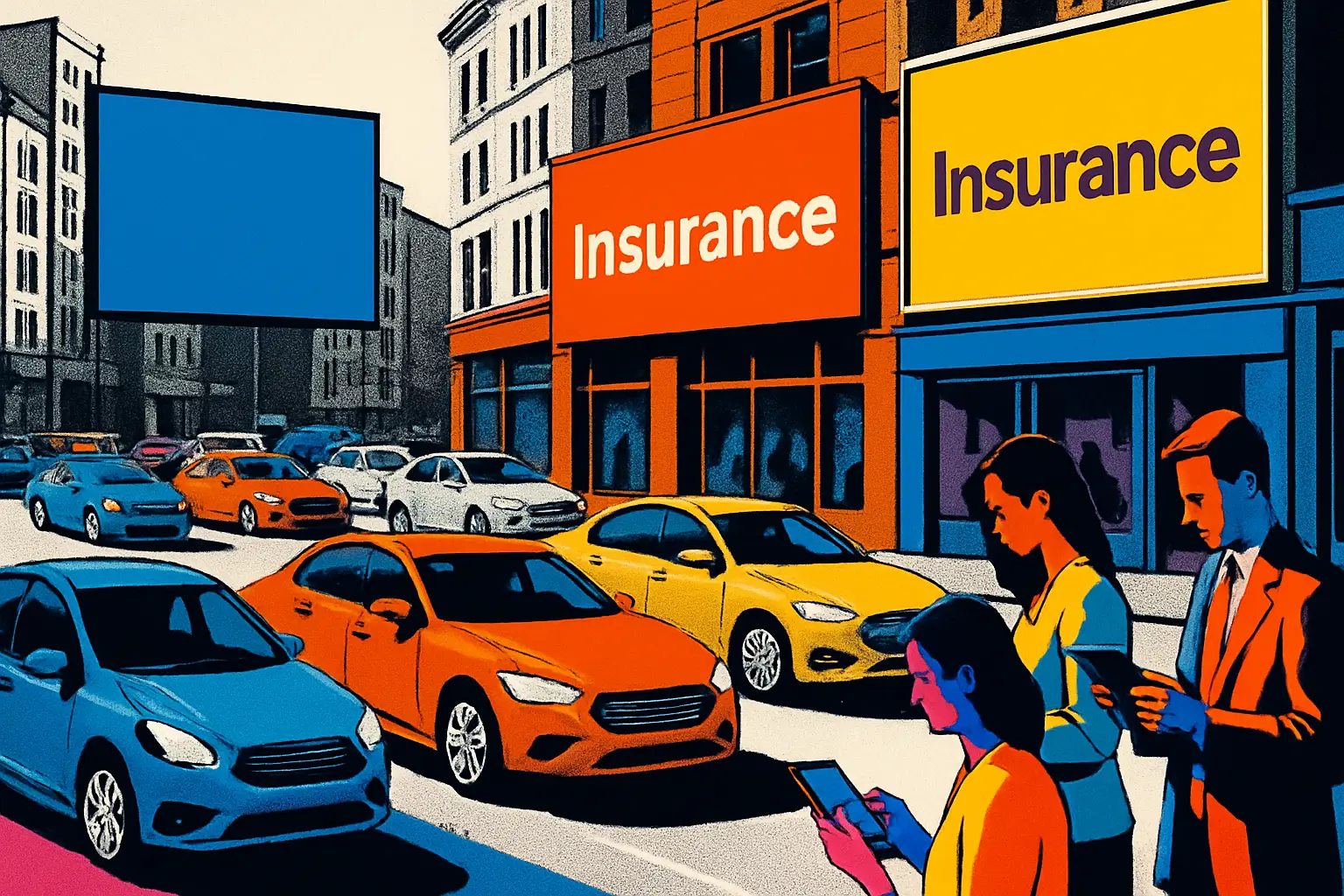A plain-English guide to the UK’s leading car insurers, how they differ, what they cost, and how to pick the right cover without faff. Includes quick steps and FAQs.
The UK car insurers drivers are talking about
Look, you just want solid cover at a fair price without the runaround. Here’s a straight-talking guide to the biggest UK car insurers, what sets them apart, and how to choose smartly in minutes.
Who should read this
- You’re a UK driver renewing soon and want a clear comparison.
- You’re confused by excess, no claims bonus, and add-ons.
- You like value but do not want claims grief.
- You want a quick, no-faff route to a decent policy.
The basics in plain English
- Cover types:
- Third party only - the legal minimum. Covers damage you cause to others. Not your own car.
- Third party, fire and theft - adds cover if your car is stolen or catches fire.
- Comprehensive - includes your own car for accidents you cause, plus third party. Often not much more expensive and sometimes cheaper.
- Excess: The first part of a claim you pay. Higher voluntary excess can lower premiums, but only pick what you could afford.
- No claims bonus (NCB): Discount for claim-free years. You can pay to protect it, which can help after a claim, but it is not a magic shield against any price rise.
- Add-ons: Courtesy car, legal cover, breakdown, windscreen, personal injury. Only add what you need.
- Telematics (black box): Tracks driving to reward safe habits, often cheaper for new drivers.
- Modifications and usage: Be honest about mileage, commuting, rideshare, and any mods. Wrong info can invalidate cover.
- Comparison sites: Handy for prices and filters. Some brands sell direct only, so check both routes.
Simple rule: buy the cover you need today and can afford on your worst day.
Big names and how they differ
Here are notable UK players and what they are known for. Where we cite market facts, we link the source.
| Insurer | Market position | Key strength | Typical buying route |
|---|---|---|---|
| Admiral Group | Largest in UK car insurance - 14% share | Range of brands for different drivers | Mix of direct and comparison sites (Source: BeInsure https://beinsure.com/ranking/largest-uk-car-insurance-companies/) |
| Direct Line Group | 10.8% share | Direct-to-consumer simplicity and cost control | Direct only - not on comparison sites (Source: Socialander https://socialander.com/top-insurance-companies-uk-2025/) |
| Aviva | Top three - 10.5% share | Broad product range and bundling options | Direct and partners (Source: Socialander https://socialander.com/top-insurance-companies-uk-2025/) |
| Hastings Group | 7% share | Strong on price comparison sites | Primarily comparison sites - 90% via aggregators (Source: Socialander https://socialander.com/top-insurance-companies-uk-2025/) |
Other names UK drivers often consider: LV=, AXA, Churchill, esure, Saga, Tesco Bank, Zurich, Ageas. These can be competitive depending on your age, car, location, and claims history.
What it could cost and what affects it
- Price drivers: age, postcode risk, car value and repair costs, annual mileage, occupation, where you park, previous claims and convictions, and voluntary excess.
- Policy choices: comprehensive vs TPF&T, protected NCB, courtesy car level, and breakdown cover can add or shave pounds from the premium.
- Payment method: paying monthly is convenient but usually adds credit costs. If you can, annual payment is cheaper.
- Telematics: can lower costs for new or careful drivers, but keep to mileage limits and driving windows to maintain savings.
- Claims service: the cheapest headline price is pointless if repairs and courtesy car support are painful. Check reviews for claims handling, not just sales chat.
Cheap is good. Good-and-cheap is better. Cheap-and-griefy is a false economy.
Eligibility and what insurers expect
- You must hold a valid UK driving licence and have the legal right to drive.
- Provide accurate details: address, mileage, commuting use, named drivers, and any motoring convictions.
- Security matters: alarms, trackers, and on-drive or garage parking can help pricing.
- Proofs: you may be asked for no claims bonus proof, documents for modifications, or evidence of mileage. Keep records handy.
- Cars used for business or ride-hailing need the correct class of use - standard SDP&Commuting will not cover paid carriage of passengers.
From quote to cover in easy steps
- Gather licence, NCB proof, mileage and car details.
- Decide cover level and must-have add-ons only.
- Compare prices on trusted aggregators.
- Check direct-only brands separately.
- Read excesses and courtesy car terms carefully.
- Pick an annual payment if affordable.
- Buy and set reminders for renewal and documents.
Upsides and trade-offs
- Pros:
- Big brands offer broad repair networks and 24-7 claims lines.
- Direct sellers can be simpler to deal with and cut costs.
- Comparison-focused insurers sharpen prices to win customers.
- Cons:
- Lowest prices can mean higher excess or limited courtesy car.
- Add-ons can quietly inflate the total cost.
- Not all brands appear on comparison sites, so extra legwork is needed.
Watch-outs before you click buy
- Excess check: add compulsory and voluntary excess together - could you afford that?
- Courtesy car: is it guaranteed or only if your car is repairable within the network?
- Windscreen cover: limits and excess vary and can sting if you commute on motorways.
- No claims protection: helps, but premiums can still change after any incident.
- Admin fees: mid-term changes, cancellation, and missed payments can add costs.
- Direct-only brands: compare them separately or you will miss options.
If you want something different
- Broker help: useful if you have convictions, imports, or modified cars.
- Telematics-first policies: ideal for new drivers to prove safe habits.
- Short-term cover: handy for borrowing a car or test drives.
- Multi-car and household bundles: families can save when insuring together.
- Bundling with broader cover: providers like Aviva offer multiple insurance types, which can simplify management and may save money when combined (Source: Socialander https://socialander.com/top-insurance-companies-uk-2025/).
Quick answers to common questions
-
Who is the biggest UK car insurer right now? Admiral Group leads with around 14% market share in 2025, shaping pricing and service standards across the market (Source: BeInsure).
-
Why do some insurers not appear on comparison sites? Direct Line Group famously sells direct, which can cut costs and keep things simple for customers who prefer a straight purchase route (Source: Socialander).
-
Are comparison sites still worth it? Yes. Hastings shows how strong pricing via aggregators can be, with most of its policies sold that way. Still check direct-only brands too (Source: Socialander).
-
Is comprehensive always pricier? Not always. For many drivers, fully comp can be similar or cheaper than TPF&T because of risk profiles. Always compare both.
-
Should I protect my no claims bonus? If you have several years built up, protection can help preserve your discount after a claim. It will not guarantee your premium stays flat.
-
Can I save by bundling policies? Potentially. Insurers with broad portfolios, such as Aviva, can offer multi-product savings and a single account to manage cover (Source: Socialander).
Your next move
Do not overthink it. Spend 10 minutes comparing like-for-like, then check any direct-only brands. At switcha, we make the faff disappear by lining up clear options, plain fees, and no surprises. Save your quotes, set a reminder, and review again 3 weeks before renewal.
Small print you should know
This guide is general information, not personalised advice. Prices and features change, and eligibility depends on your circumstances. Always read the policy documents, check exclusions and excess, and confirm details with the insurer before you buy.
Get smarter with your money
Join thousands of Australians who are taking control of their financial future
FAQs
Common questions about managing your personal finances
Begin by tracking every expense for one month. Use an app or spreadsheet. No judgment. Just observe your spending patterns.
Cancel unused subscriptions. Cook at home. Compare utility providers. Small changes add up quickly.
Aim for 20% of your income. Start smaller if needed. Consistency matters more than the amount.
Choose reputable apps with strong security. Read reviews. Check privacy policies. Protect your financial data.
Pay bills on time. Keep credit card balances low. Check your credit report annually. Be patient.
Still have questions?
Our team is ready to help you navigate your financial journey
More financial insights
Explore our latest articles on personal finance and money management




